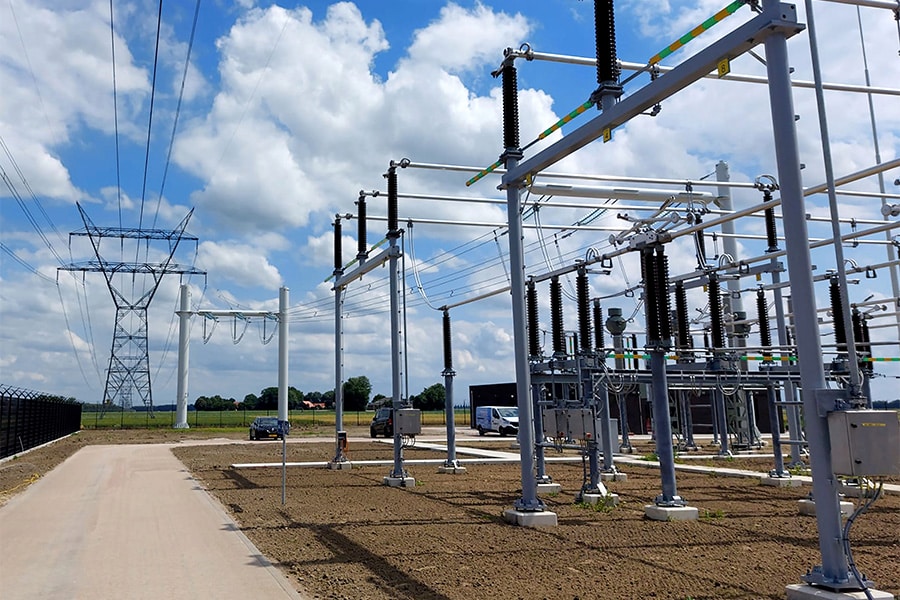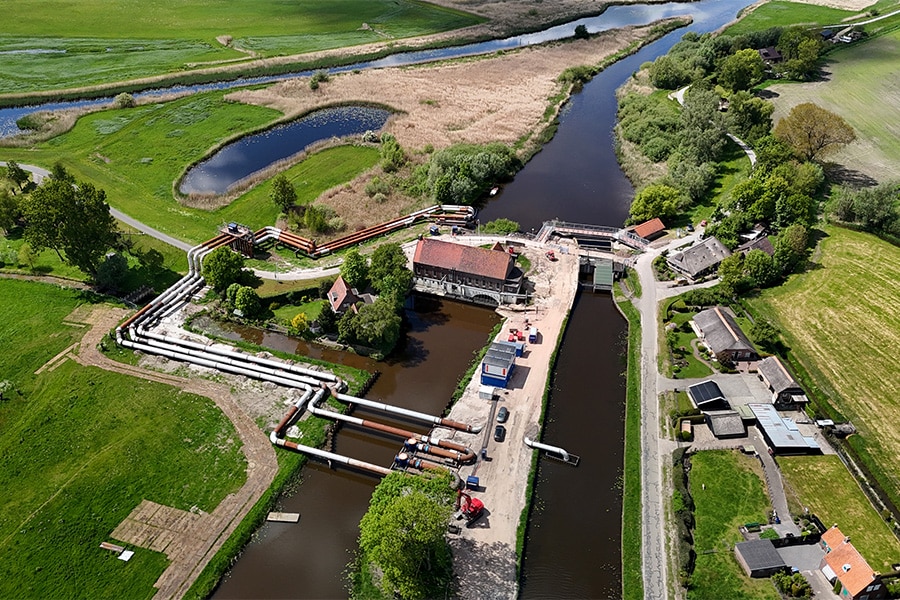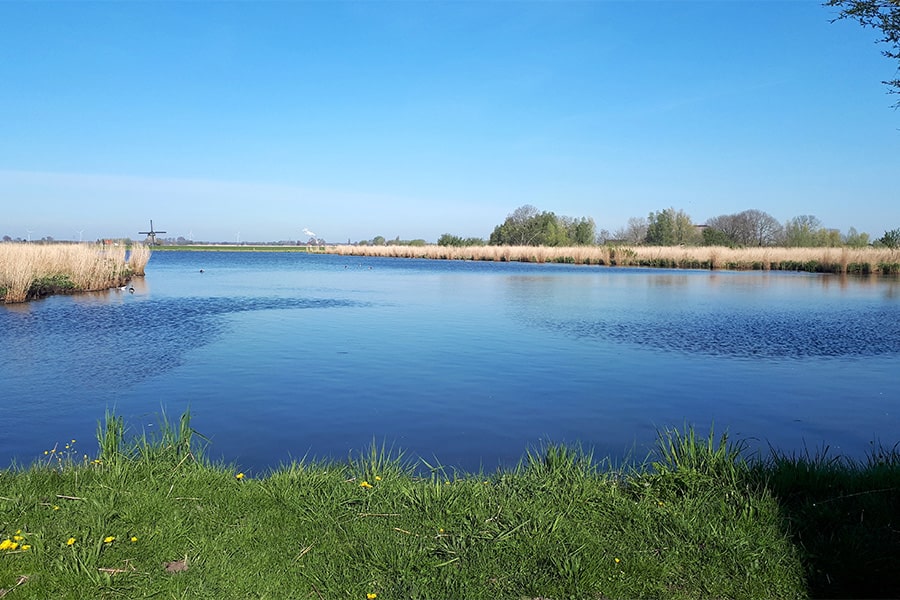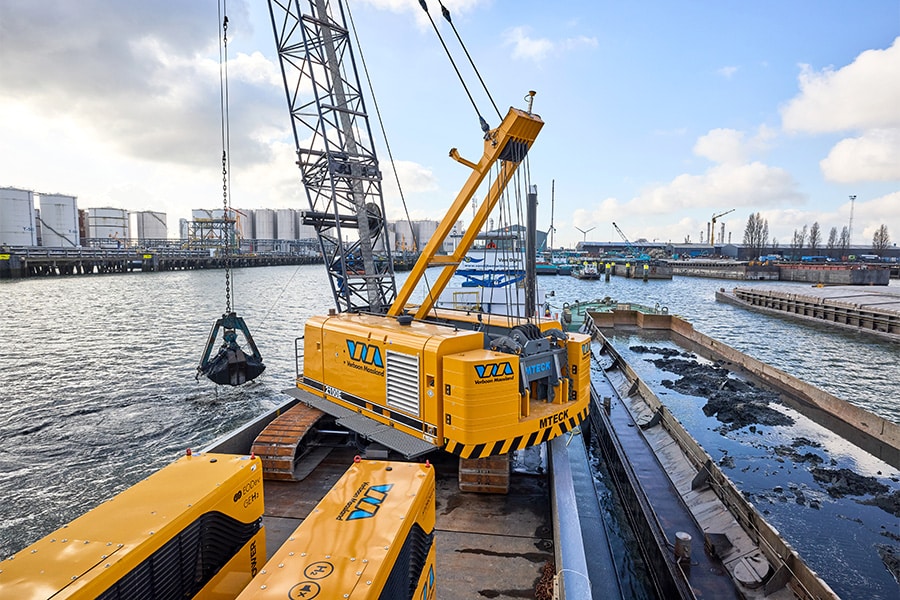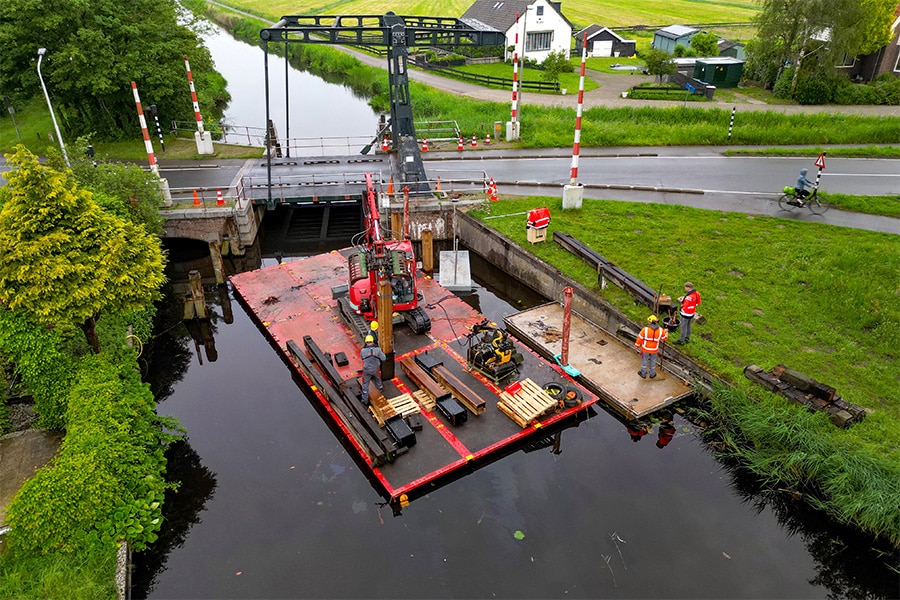
Sustainable renovation system for mooring posts
Wood rot is a common problem around hydraulic structures. Especially at the air-water line level, where such assemblies have to endure the most. Water fluctuations, currents, floating debris, exposure to (salt) water, exposure to chemicals: these are just a few of the factors that can significantly shorten the life of the wood and cause the structure to rot. As a solution, the traditional approach is often to completely replace the affected structures or to perform short local life extension maintenance on and around the waterline. Alternatives, however, are both quite costly and time-consuming....
As a multi-functional player in civil engineering, Griekspoor offers an innovative and sustainable solution to the above problem with its in-house developed renovation system 'De Bever'. Meanwhile, the counter already stands at over 400 mooring piles, where the system has been successfully applied at various locations and within various project frameworks. "With 'De Bever' we extend the life span of mooring piles by replacing only the affected part and preserving the existing structure," says Scott Griekspoor, Operational Director within the Nieuw-Vennep family business. "This not only results in an extended service life comparable to a complete renewal. It also greatly reduces environmental impact, costs and inconvenience to the surrounding area."
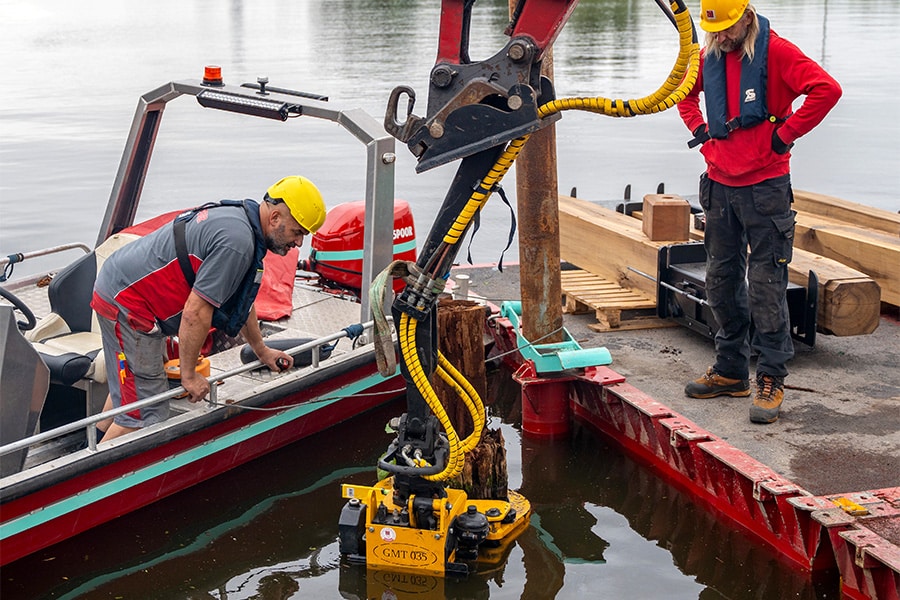
Main pillars
Griekspoor largely picked up the principles of the patented mooring post renovation system from nature, it turns out. "Beavers are known for their skill in building and repairing wooden structures. At the same time, they are hard and efficient workers. Character traits that you find one-to-one in our company and this invention," continues Jop van Geffen, responsible within Griekspoor for project coordination in the Engineering Department. "Sustainability, efficiency and reliability are in fact the main pillars of 'De Bever,' which in principle is already as smart as it is simple." Instead of renewing mooring posts and/or breakwaters entirely or repairing them locally with epoxy resin, the system offers the possibility of replacing only the affected part with wood, steel or plastic and thus extending the service life. "We cut down the mooring post or fender to below the rotten part, below the waterline," Jop explains the process. "Then a renewed wooden, steel or plastic head is mounted on top using the 'De Bever' steel clamp structure."
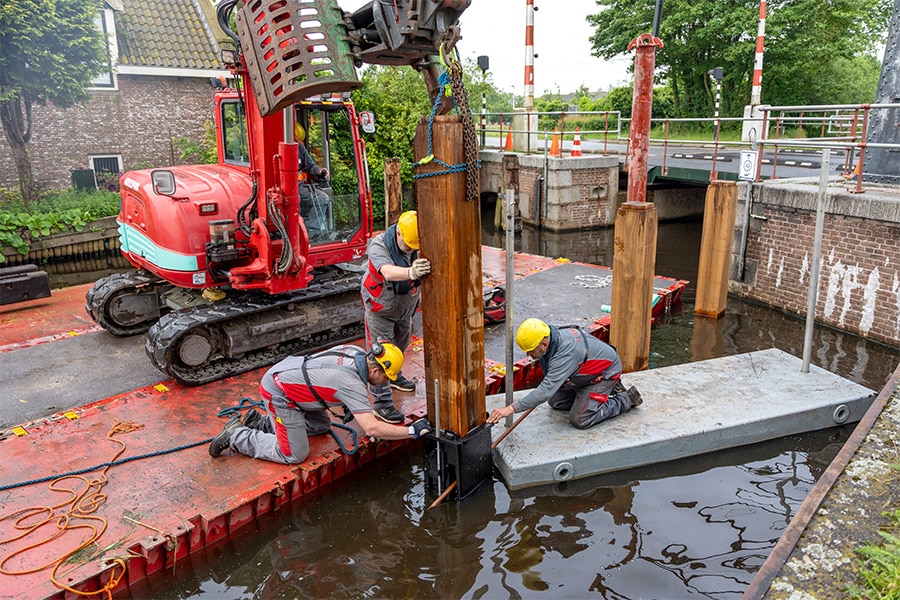
Climate
By 2050, the government wants to be climate neutral. By 2030, CO2 emissions will be reduced by 60% compared to 1990. The "The Beaver" renovation system helps achieve this by preparing the required pile heads in the workshop. This requires less large machinery on site and saves as much as 70% of CO2 per pile compared to full renovation.
Environment
With "The Beaver," Griekspoor is ensuring safe waterways and roads with minimal environmental impact. Not only does 80% of the bollard remain intact, the new bollard head is also made of FSC®-certified hardwood. Use of smaller machinery also reduces noise and promotes biodiversity.
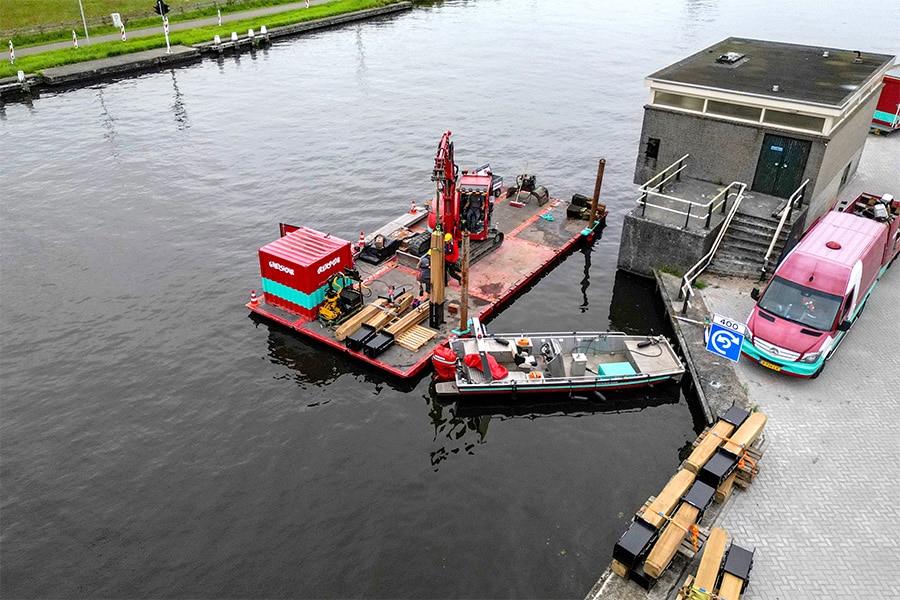
Circularity
'De Bever' scores high on the Ladder of Lansink (step B), the national standard in the field of waste management. For example, sawed-off pile heads are reused as bark for playground surfaces. The core of the piles, often still in good condition, are processed into intermediate and lower bobbins and other parts of a composite retaining structure.
Biodiversity
By using smaller machinery, noise and odor pollution to the surrounding area will be reduced. Furthermore, the existing bollard will be maintained to below the air-water line. Therefore, there is no chance of welting and flora and fauna will not be disturbed.
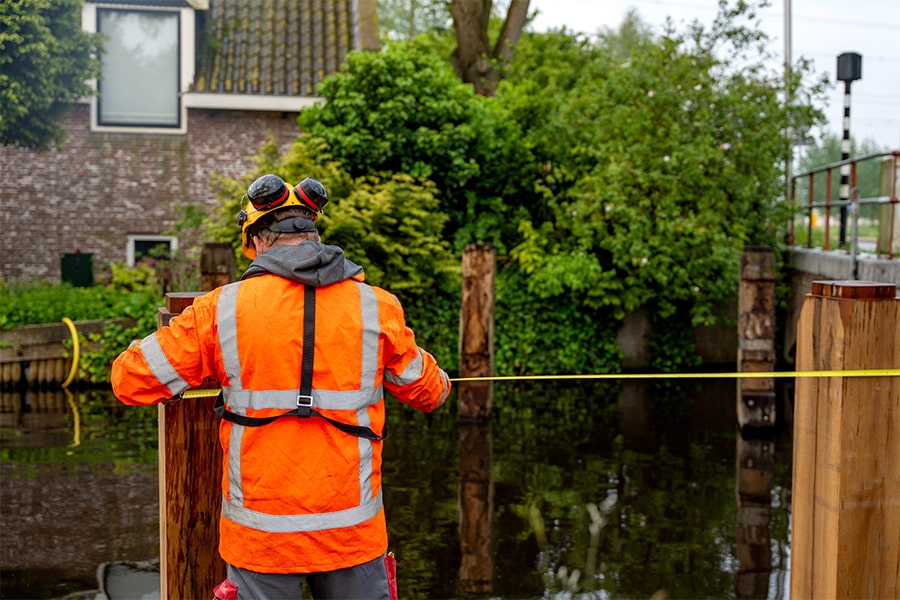
Man
'The Beaver' reduces environmental damage and improves working conditions. As a result of reduced fuel emissions and complete preparation in the workshop, employees do not have to work in the water. At the work site, this results in efficient and fast execution.
Appropriate to MVOI
'The Beaver' not only extends the life of existing timber structures in hydraulic engineering. The technology also plays an important role around promoting ambitious Socially Responsible Contracting and Procurement (CSRI). "Our renovation system specifically contributes to the social themes that are central within CSRI, including climate, environment, circularity, biodiversity and people-focused initiatives," said Scott Griekspoor.
